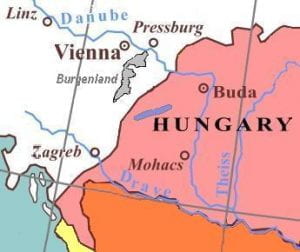This blog has taken us around the world, to different temples, cities, and villages, all with some unique culturally significant practice that most United States citizens would not have come across in daily life. This final post will be about a strange snorkeling championship, but like the others, is not what comes to mind.
In a small Welsh town of Llanwrtyd Wells in the UK, the annual “World Bog Snorkeling Championship” takes place. For those who do not know what a bog is, the Merriam-Webster Dictionary defines it as “a poorly drained usually acid area rich in accumulated plant material, frequently surrounding a body of open water, and having a characteristic flora (as of sedges, heaths, and sphagnum)”. To me, this does not seem like the first place I would think to go snorkeling!  It is rumored that this interesting traditional sport was created due to a bar bet in 1976. Although it only started with a few daring participants, hundreds of swimmers flock to Llanwrtyd Wells to try to break the record for traversing the jet-black waters. In 2019 the bog snorkelers included participants from Australia, Belgium, Denmark, Ireland, Italy, the Netherlands, South Africa, Sweden, and the United States, making this a truly international world championship.
It is rumored that this interesting traditional sport was created due to a bar bet in 1976. Although it only started with a few daring participants, hundreds of swimmers flock to Llanwrtyd Wells to try to break the record for traversing the jet-black waters. In 2019 the bog snorkelers included participants from Australia, Belgium, Denmark, Ireland, Italy, the Netherlands, South Africa, Sweden, and the United States, making this a truly international world championship.
The competition itself is pretty simple. Each August, the competitors must complete two laps of a 180-foot lane carved into the Waen Rhydd peat bog, only with the help of flippers and a snorkel. Some recommend wearing a wetsuit as well, due to the slightly uncomfortable water temperatures, but it is not required. Some participants even wear outlandish costumes to the point where now, the best costume is awarded with a prize.  However, the best costume award is not what entices participants each year. Similar to the Olympics or any other sporting event, there is a record to be broken. The goal of the competition is to swim through the murky waters in the least amount of time. Currently, the world record was set by Neil Rutter at the Waen Rhydd bog on August 26, 2018, with a time of 1 minute and 18.81 seconds.
However, the best costume award is not what entices participants each year. Similar to the Olympics or any other sporting event, there is a record to be broken. The goal of the competition is to swim through the murky waters in the least amount of time. Currently, the world record was set by Neil Rutter at the Waen Rhydd bog on August 26, 2018, with a time of 1 minute and 18.81 seconds.
The swimming starts at around 10 in the morning. There are signs posted to guide people from the town to the bog via a nice walk about a mile in length, and there is also a shuttle bus running from the town square to the bog and back throughout the day, which starts running at around 9 am. There are food and drink vendors, crafts, a bouncy castle, live music and an authentic bar on the event’s site, so it’s a great day out even if you don’t think taking the plunge into murky waters is desirable. Online entries close about 7 days before the event, but you can enter on the day if you have the sudden desire to! Entry fees are £15 for seniors (over 16 years old) and £12 for juniors (14 to 15 years old).  Although this may seem like a strange practice stemming from a bet, it serves as a platform to raise awareness for the environmental importance of peat bogs and the wildlife that reside in them. This is a very important goal that often gets overlooked by the intense competition and the strange sporting event, but with climate change and industrialization, many habitats including peat moss bogs are in danger. Incorporating messages like these into fun events is something the United States should take into account. After all, supporting an event with a good cause is twice the fun. Thank you for embarking on this cultural journey with me and I hope some of you can visit these amazing places and take part in these festivals!
Although this may seem like a strange practice stemming from a bet, it serves as a platform to raise awareness for the environmental importance of peat bogs and the wildlife that reside in them. This is a very important goal that often gets overlooked by the intense competition and the strange sporting event, but with climate change and industrialization, many habitats including peat moss bogs are in danger. Incorporating messages like these into fun events is something the United States should take into account. After all, supporting an event with a good cause is twice the fun. Thank you for embarking on this cultural journey with me and I hope some of you can visit these amazing places and take part in these festivals!


























